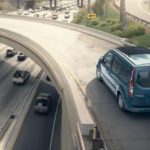When it comes to public health concerns, few problems are costlier – both in terms of human lives and financial expenditures – than car accidents and collisions. So it only makes sense that auto manufacturers, government organizations, and other privately held companies would invest time, money, and resources into developing advanced technology that prevents car accidents and reduces the severity of collisions.
5 Technologies Making a Difference:
According to data published by the Association for Safe International Road Travel (ASIRT), nearly 1.25 million people die each year in road crashes around the world. An additional 20 to 50 million people are injured or disabled. Road crashes are the ninth leading cause of death around the world and the number one cause of death among young people between the ages of 15-29.
The annual cost of these accidents is $518 billion globally. On a micro-level, car accidents often leave victims with thousands of dollars in expenses and damages, which forces them to file injury claims to receive compensation for medical bills, property damage, lost wages, and pain and suffering.
Unless something is done, ASIRT reports that traffic injuries will become the fifth leading cause of death by as early as 2030. Thankfully, progress is being made in the form of innovative safety technologies that aim to prevent collisions and keep drivers and passengers out of harm’s way.
Here are a few of the leading innovations:
-
Backup Cameras:
It’s easy to take backup cameras for granted, but the fact that almost every new car on the road has a camera installed is a huge win for road safety. Not only do they help prevent accidents in parking lots and situations where drivers must maneuver in reverse, but they also significantly lower the risk of running over pets, toddlers, and small objects in garages and driveways. (As of May 2018, any new car in the new United States is required to have a backup camera installed.)
-
Automatic Emergency Braking Systems:
Thousands of collisions can be prevented each year by speeding up driver reaction time. And while there are some things drivers can do to put themselves in better position to swiftly respond to external factors, it’s ultimately up to technology to step in if significant strides are to be made. This is where automatic emergency braking systems come into play.
Whether it’s dynamic brake support – which kicks in when a driver is braking to help slow down the vehicle at a faster rate – or crash imminent braking – which detects impending collisions and stops or slows the vehicle on its own – these automatic braking innovation allow drivers to respond faster and more efficiently, potentially saving lives as a result.
-
Lane Departure Warning:
An increasing number of new cars are being manufactured with lane departure warning systems built into the cabins. These systems detect when a vehicle starts to drift out of the lane and give the driver a warning. These warnings typically come in the form of a beep or vibration. Some technologies even go so far as to gently correct the steering wheel and put the car back in the lane.
-
Blind Spot Warning:
Blind spots can be deadly – particularly for drivers of large vehicles, trucks, or vans. And while nothing replaces a manual glance over the shoulder to verify clearance, most new vehicles have blind spot warnings that tell drivers when another car is hidden from view. It’s a helpful, albeit imperfect, feature to have when driving on the interstate and other multi-lane roads.
-
Distracted Driving Apps:
Distracted driving kills thousands of Americans every single year. It’s such a pervasive problem that most states now have laws against using handheld devices while operating a motor vehicle. But even with these stipulations, drivers still find themselves distracted by their smartphones. Apps like these are hoping to further reduce this problem by promoting safer driving habits.
Technology With the Assist:
While technology is making great strides in helping reduce the number of dangerous and deadly car crashes, it’s not enough on its own. In addition to ensuring the right innovations make their ways into our vehicles, we also have to work hard to educate and train drivers to make smarter decisions while behind the wheel. From distracted driving to defensive driving, knowledge is power. When combined with the right technological systems, a proper understanding of safe driving habits will produce real change.






